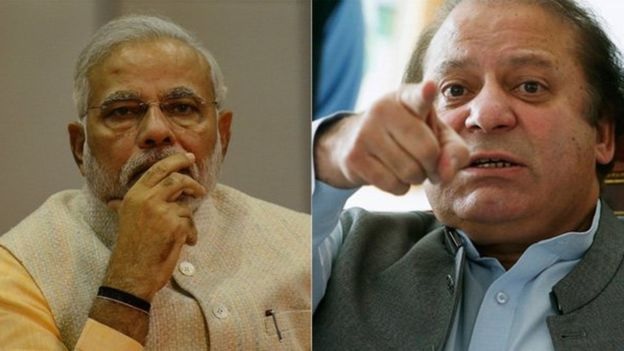President Barack Obama is an avaricious statesman. He has not yet given up on the Trans-Pacific Partnership Agreement as a fine legacy of his presidency. Therefore, much depends on how focused Obama could be as regards India-Pakistan tensions and Kashmir.
Seyed Mushahid Hussein, the influential Pakistani politician and senator (and former minister has said the Obama administration is doing “positive pushing and prodding for reducing India-Pakistan tensions”. One could somehow feel this in the bones, but MH’s authoritative confirmation is helpful.
Interestingly, MH was summing up his visit to Washington. The Americans and Mushahid Hussein go back a long way. (He is presently also heading a think tank devoted to China studies.) MH is media savvy. All this taken together, his meetings in Washington appear to assume the nature of a Track I.5. To my mind, our media blithely mistook MH’s mission to the US as a propaganda exercise.
Interestingly, MH sounded cautiously optimistic that PM Narendra Modi might finally travel to Pakistan to attend a SAARC summit and “embrace Prime Minister Nawaz Sharif”. Indeed, through the last few days since our ‘surgical strikes’ of September 29 that something is churning in the Pakistani mind. A number of stray reports appeared to the effect that Pakistan might have a rethink on ‘non-state actors’. Hussein, who is a hardcore ‘establishment voice’, has now supported that view. (here, here, here and here)
Unsurprisingly, the Indian media, who seldom read Pakistani tea leaves correctly, given the pervasive ‘anti-Pakistani’ mindset, have rushed into judgment that a great schism must be appearing in Pakistan between PM Nawz Sharif and army chief raheel Sharif, ensuing from the ‘surgical strikes’.
This is a laughable proposition that suddenly Prime Minister Nawaz Sharif is 10′ tall, or, that right in the middle of a crisis with a prospect of war with India staring at him, he’d think of putting down the military leadership. No, things are more subtle than that.
There is a consensus between Islamabad (and Lahore) on the one hand and the GHQ in Rawalpindi on the other on dealing with the crisis with India. Arguably, MH’s remarks corroborate this, given his enduring links with the Pakistani military establishment.
Often enough, ‘feelers’ are put out by adversaries in a convoluted way and it is for us to make appropriate conclusions. Fundamentally, Pakistan’s interest lies in engaging with India. The civilian and military leaderships are on the same page here. If we give up the old mindset, we can see things more clearly why it is so.
The point is, it is the CPEC that is Pakistan’s number one preoccupation today and, tensions with India and the $46-50 billion projects simply do not go together. Both PM and army chief know fully well that CPEC is Pakistan’s moment to make good. This is something that the prime minister and the army chief keep on underscoring at any available opportunity.
See PM NS’ speech in Lahore on Saturday. (News) Given this geopolitical reality, much depends on our willingness to engage with Pakistan. It is foolish to put the cart before the horse. On the contrary, one (additional) way of calming the situation in Kashmir will be by remaining engaged with Pakistan. When Simla Agreement affirms that we will talk Kashmir with Pakistan bilaterally, where is the problem? Of course, engagement with Pakistan is not the panacea for the crisis we face in Kashmir.
But then, repression is also not going to help us. The Indian nation will remain eternally grateful to ‘Friend Barack’ if he, although a lame duck, puts some sense into the intransigent Indian mind. The fundamental deficiency of Indian strategic discourses regarding Pakistan (or China) is that we have a tunnel vision. The Indian statecraft can benefit out of Cold War history.
The historic summit between the US President Ronald Reagan and Soviet President Mikhail Gorbachev took place in Geneva in November 1985 in the full shadows of the ‘Reagan Doctrine’ to provide covert aid to anyone and everyone who would undermine Soviet Union (“evil empire”). The CIA was bleeding the Red Army in Afghanistan at that time.
And, yet, in eleven months flat when Reagan and Gorbachev met in Reykjavík in October 1986, they came breathtakingly close to a ‘nuclear-free’ world vision based on Gorbachev’s historic ‘double-zero’ proposal. Of course, Reykjavik summit broke down at the last minute. But then, Soviet-American engagement as such remained steady till the Cold War ended, finally.


